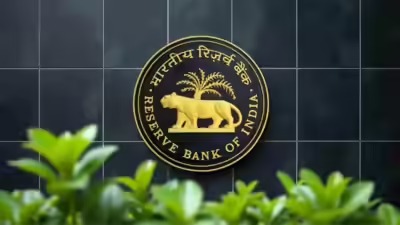In a sweeping overhaul of credit norms, the Reserve Bank of India (RBI) this week announced its most significant reforms in over a decade to widen credit access for businesses, deepen capital markets, and boost economic resilience amid global uncertainties. Central to the measures are expanded lending capabilities for banks, enhanced borrowing limits against shares, and new frameworks for corporate acquisitions.
Key Highlights Of RBI's Bold Move
The RBI has raised the cap on loans against shares fivefold, from Rs 20 lakh to Rs 1 crore per individual, enabling greater liquidity for investors leveraging their equity holdings.
IPO financing limits have more than doubled, increasing from Rs 10 lakh to Rs 25 lakh per person, facilitating easier access to initial stock offerings for high net-worth individuals and retail investors.
Banks are now officially permitted to fund mergers, acquisitions, and leveraged buyouts—a domain traditionally dominated by private credit and foreign lenders—marking a historic shift in Indian corporate finance.
The regulatory ceiling on lending against listed debt securities has been lifted, widening the scope for banks to support investors and foster capital market participation.
Borrowing restrictions on companies with loans above Rs 10,000 crore have been eased, removing costly capital requirements and allowing more flexible, cheaper corporate credit.
To promote infrastructure growth, risk weights on loans disbursed by NBFCs to operational infrastructure projects have been lowered, reducing borrowing costs and accelerating project execution.
Urban cooperative bank licensing will resume after a two-decade hiatus, signaling RBI’s commitment to reviving smaller financial institutions and broadening financial inclusion.
Why These Reforms Matter
By integrating banks into acquisition financing, RBI addresses a critical gap in India’s credit ecosystem, potentially mobilizing an estimated Rs 1.2 lakh crore in new credit growth linked to mergers and acquisitions alone.
The moves enhance banks’ capital efficiency while balancing credit concentration risk at individual and systemic levels.
These reforms complement government initiatives like GST reforms, reflecting a coordinated fiscal and monetary approach to stimulate growth.
Investors and companies stand to benefit from improved liquidity, lower financing costs, and wider market participation.
RBI asserts a cautious but confident stance, pairing reform with safeguards to prevent reckless borrowing and asset bubbles.
The Road Ahead
Experts view RBI’s reforms as transformational, realigning India’s banking and financial sectors with global norms while unlocking fresh growth avenues for companies and capital markets. As these changes take effect from October 2025, corporate India can expect a boost in funding options, a rise in market dynamism, and fresh impetus for expansion amid prevailing global challenges.
Source: Times of India, Economic Times, Hindustan Times, RBI Press Release, NDTV
